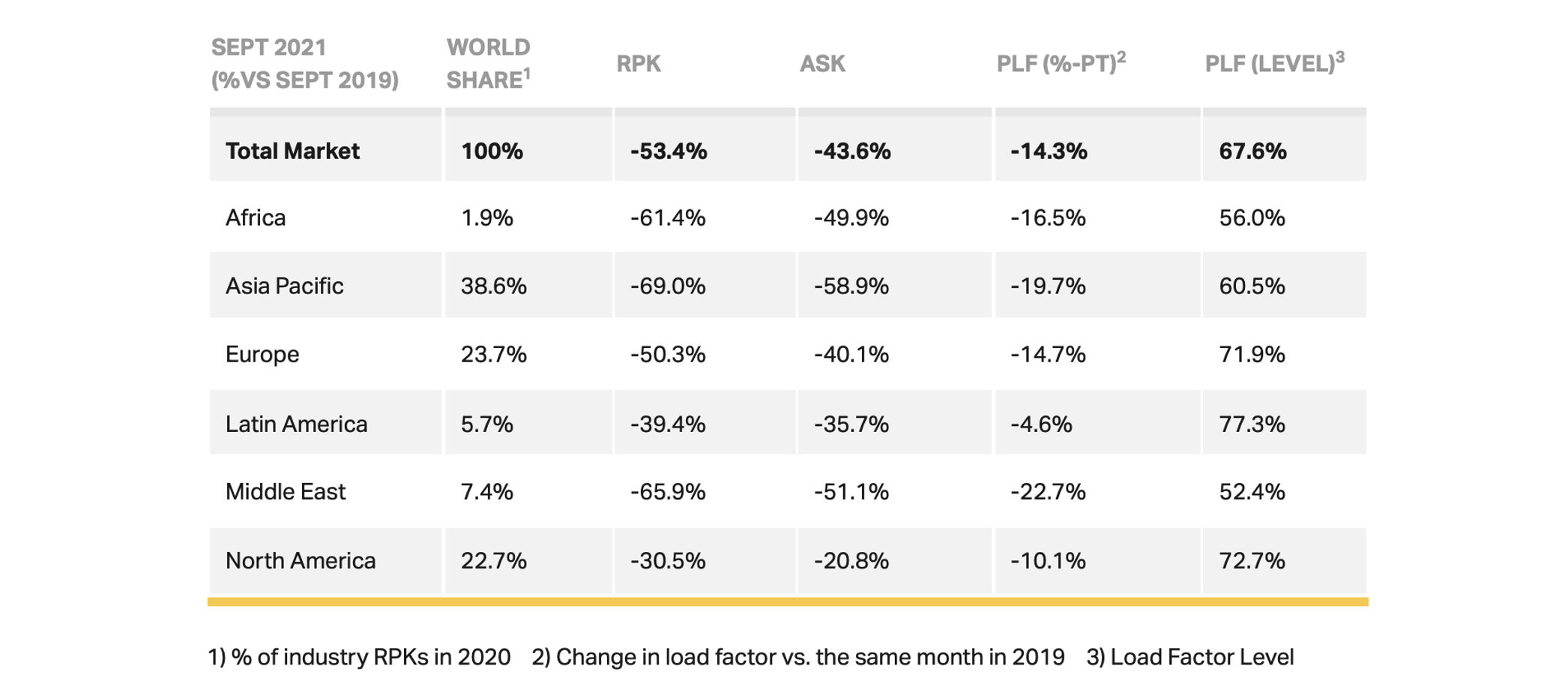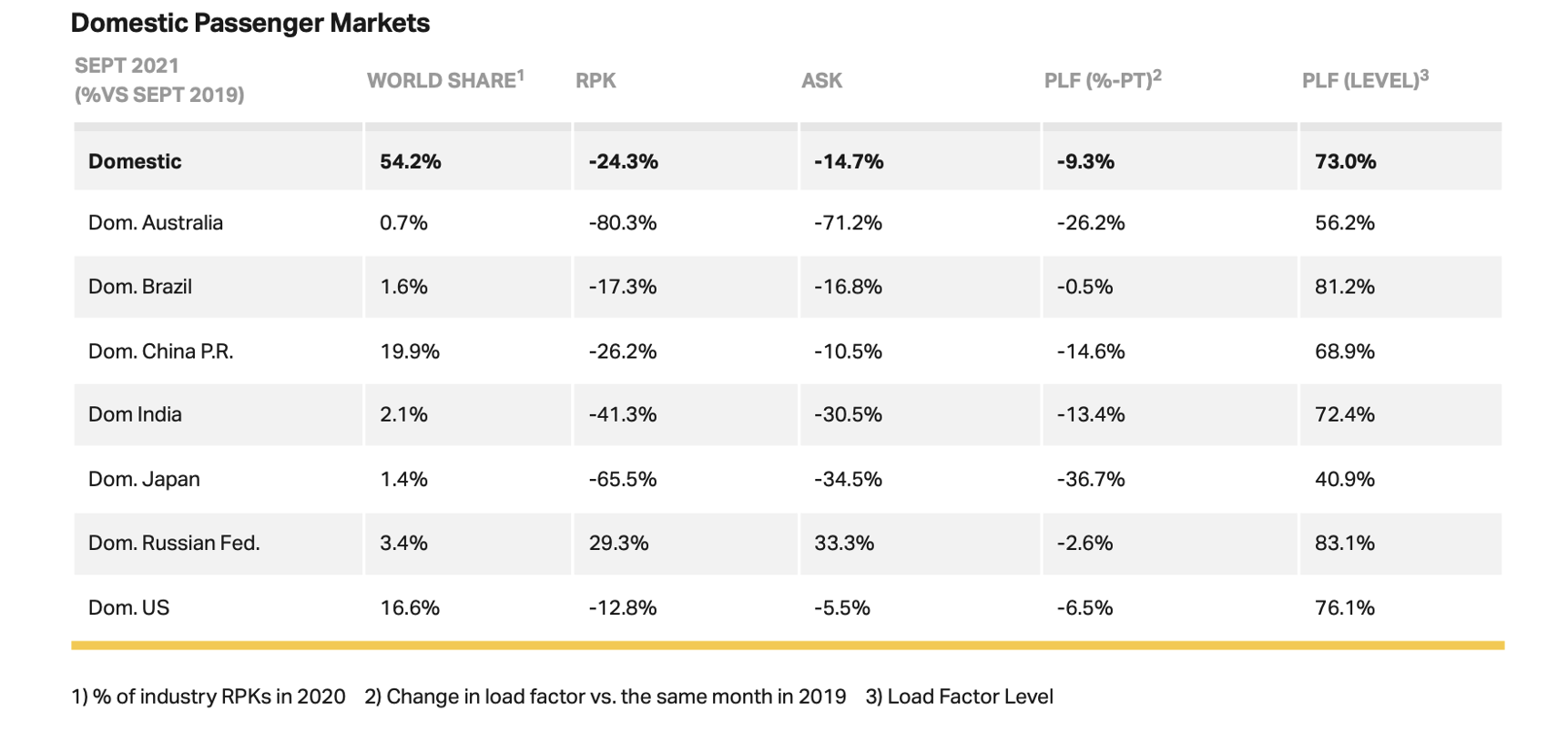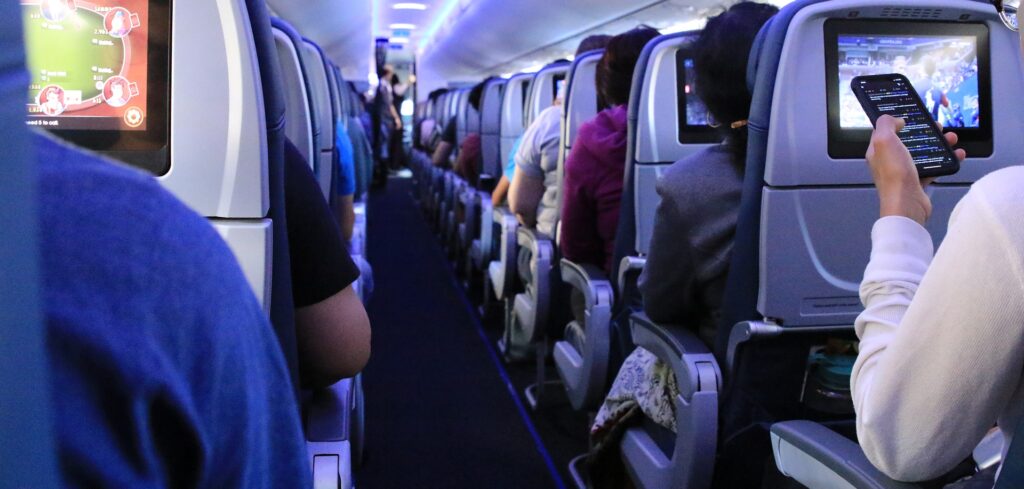The International Air Transportation Association (IATA) observed a moderate rebound in air travel in September 2021 compared with August.
Looking at year-on-year changes, the trade association decided to compare 2021 data with 2019, because the 2021 and 2020 monthly results would inevitably be distorted by Covid-19, whereas 2019 followed a normal demand pattern. Total demand for air travel in September 2021 (measured in revenue passenger kilometers or RPKs) was up 3% from August. However, compared with September and August 2019 the demand was still down 50% (53.4% down on September 2019 and 56.0% below August 2019 levels).
Overall, domestic markets were up 8% from August to September 2021. All markets showed improvement apart from Japan and Russia, although the latter remained in solid growth territory compared with 2019. However, despite this slight improvement in domestic and overall markets, international passenger demand in September was 69.2% below September 2019, which was fractionally worse than the 68.7% decline recorded in August.

Internationally, there was a range of demand changes in the passenger markets. For European carriers, international traffic in September saw a 56.9% decline from the same month in 2019. This was a 1% smaller decline than August, which saw a 56.9% reduction compared with the same month in 2019. Capacity also dropped 46.3% and load factor fell 17.2% to 69.6%.
African airlines’ traffic fell 62.2% in September compared with two years ago, almost 4% worse than the 58.5% decline in August compared with August 2019. September capacity was down 49.3% and load factor declined 18.4% to 53.7%.
Asia-Pacific airlines saw their September international traffic fall 93.2% compared with September 2019, virtually unchanged from the 93.4% drop registered in August 2021 versus August 2019 as the region continues to have the strictest border control measures. Similarly, capacity dropped 85.2% and the load factor was down 42.3% to 36.2%, which was easily the lowest among the regions.
Middle Eastern airlines had a 67.1% drop in demand in September compared with September 2019, which was a slight improvement on the 68.9% decrease in August compared with the same month in 2019. Overall, capacity declined 52.6%, and load factor slipped 23.1% to 52.2%.
North American carriers experienced a 61% traffic drop in September versus the 2019 period. This somewhat worsened over the 59.3% decline in August compared to August 2019. Capacity for this area dropped 47.6%, and load factor fell 21.3% to 61.9%.
Latin American airlines saw a 61.3% drop in September traffic, compared with the same month in 2019, which was an improvement on the 62.6% decline in August compared with August 2019. September capacity fell 55.6% and load factor dropped 10.7% to 72.0%, making this the highest load factor among the regions for the 12th consecutive month.

In domestic passenger markets, Brazil’s domestic market maintained its gradual recovery amid positive vaccination progress. Traffic was down 17.3% compared with September 2019 – improved from a 20.7% fall in August. However, Japan’s domestic traffic in September was down 65.5%, a deterioration from the 59.2% decline in August versus August 2019, owing to the impact of restrictions.
Willie Walsh, director general of IATA, said, “September’s performance is a positive development, but recovery in international traffic remains stalled amid continuing border closures and quarantine mandates. The recent US policy change to reopen travel from 33 markets for fully vaccinated foreigners from November 8 is a welcome, if long overdue, development. Along with recent reopenings in other key markets like Australia, Argentina, Thailand and Singapore, this should give a boost to the large-scale restoration of the freedom to travel.”


